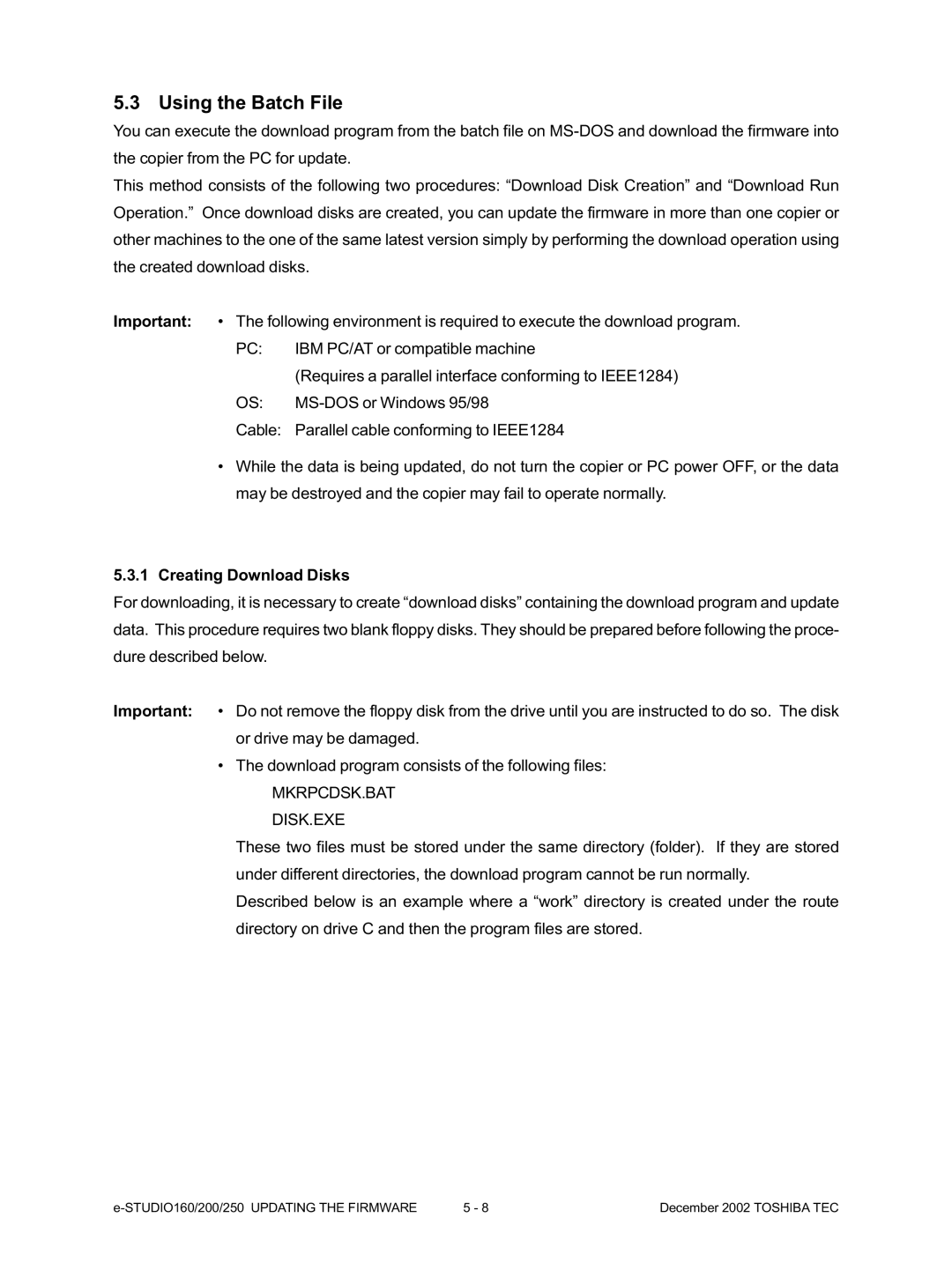5.3 Using the Batch File
You can execute the download program from the batch file on
This method consists of the following two procedures: “Download Disk Creation” and “Download Run Operation.” Once download disks are created, you can update the firmware in more than one copier or other machines to the one of the same latest version simply by performing the download operation using the created download disks.
Important: • The following environment is required to execute the download program.
PC: | IBM PC/AT or compatible machine |
| (Requires a parallel interface conforming to IEEE1284) |
OS: | |
Cable: | Parallel cable conforming to IEEE1284 |
•While the data is being updated, do not turn the copier or PC power OFF, or the data may be destroyed and the copier may fail to operate normally.
5.3.1Creating Download Disks
For downloading, it is necessary to create “download disks” containing the download program and update data. This procedure requires two blank floppy disks. They should be prepared before following the proce- dure described below.
Important: • Do not remove the floppy disk from the drive until you are instructed to do so. The disk or drive may be damaged.
• The download program consists of the following files:
MKRPCDSK.BAT
DISK.EXE
These two files must be stored under the same directory (folder). If they are stored under different directories, the download program cannot be run normally.
Described below is an example where a “work” directory is created under the route directory on drive C and then the program files are stored.
5 - 8 | December 2002 TOSHIBA TEC |
